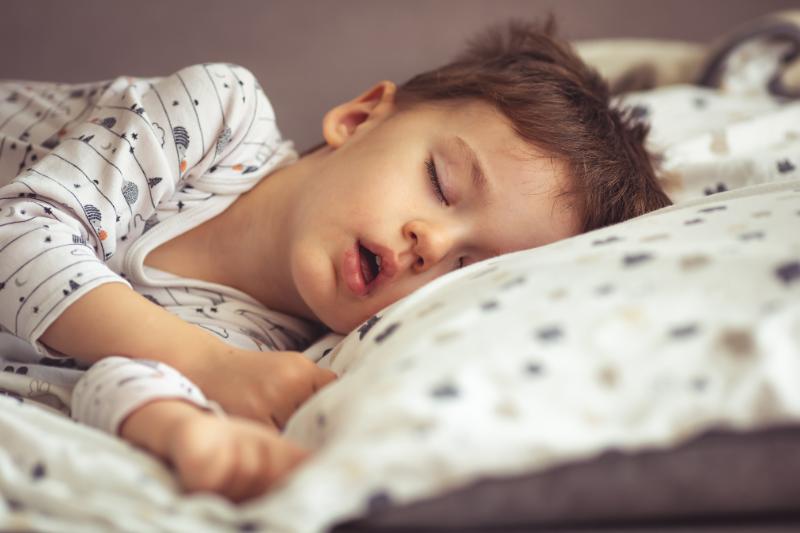Respiratory illnesses caused by bacterial or viral infections affect the nasal structure, mouth, sinuses, and throat. Children are particularly prone to these illnesses during the spring or winter months, when infections happen more often.
Some of the most common respiratory illnesses in children include:
- Sinusitis
- Croup
- Bronchitis
- Pneumonia
While antibiotics may be an effective treatment approach to bacterial infections, prevention remains the best strategy to protect your child.
As a parent, it is essential to always remain involved and attentive to your child’s health so that you can contact your pediatrician on time.
The sinuses are the cavities near the nasal passage located around the eyes and nose, and they filter the air. Sinusitis happens when these cavities become infected by bacteria or physical injuries.
The intensity of the symptoms may range from acute to chronic. They are usually managed through decongestants and antibiotic treatment.
Some of the most common sinusitis symptoms in children include:
- Stuffy nose
- Headache
- Cough with phlegm
- Fever
- Loss of smell
- Pain over the sinus area
- Mucus down the back of the throat (post-nasal drip)
In most cases, sinusitis occurs after a cold or respiratory infection. This causes the sinuses to become swollen, blocking the opening of the facial air cavities (paranasal sinuses) and allowing bacteria to grow.
Some of the most common bacteria that lead to sinusitis include Streptococcus Pneumonia (strep), Haemophilus influenzae (the flu), and Moraxella Catarrhalis.
Other conditions that can block nasal secretions include:
- Abnormalities in nasal structure
- Dental infections
- Physical injuries to the nose
- Foreign objects inside the nose
- Cleft palate
Treatment will depend on your child’s age, health, and severity of symptoms. Most treatment plans involve multiple approaches, including the following:
- Nasal Saline Wash helps to clear the nasal passages of excess mucous and bacteria.
- Antibiotic treatment is usually considered when severe symptoms like fever or eye swelling appear
- Painkillers like ibuprofen and Tylenol can help with symptoms like headaches and sore throat.
- Decongestants like mucus thinners may help evacuate the nasal secretions stuck in the sinuses.
- Humidifier that can help reduce swelling and irritation.
- Adenoid surgery helps clear the nasal passages of children whose sinusitis does not improve even after trying other options.
The bronchi are the large tubes inside the lungs that carry the air from the windpipe to the lungs. These have a delicate lining protecting the organs and tissues involved in breathing. When this lining becomes swollen and red because of a virus, it is called bronchitis.
Your child may have bronchitis if they experience the following symptoms:
- Sore throat
- Fever and mild chills
- Muscle pain
- Cough
- Runny nose
- Chest congestion
Bronchitis in children is commonly caused by viral infections that spread due to direct contact with people who are sick. Infection can happen when sharing food or accidentally touching an infected surface and placing the fingers in the eyes or mouth.
Exposure to tobacco smoke significantly increases the chances of developing complications like chronic bronchitis.
Since a virus usually causes bronchitis, antibiotics to treat bacteria will not help manage bronchitis symptoms. Most children with bronchitis are encouraged to stay home and rest until they feel better.
Your doctor will usually recommend multiple tips to care for your child during a bronchitis episode. This can include drinking plenty of liquids and using over-the-counter cough medicine.
If bronchitis progresses into a severe viral infection, medical assistance may involve offering oxygen through a face mask and intravenous hydration.
Pneumonia is an acute infection that targets the lungs and fills the tiny, balloon-like structures with pus and fluid. This leads to a limited oxygen intake and makes breathing very painful. It’s usually caused by infectious agents like viruses, bacteria, and fungi.
Symptoms of pneumonia may vary depending on your child’s age, overall health, and underlying cause. For bacterial cases of pneumonia, symptoms may include:
- Mucus-filled coughing
- Vomiting or diarrhea
- Fatigue
- Fever and mild chills
Pneumonia caused by a virus usually shares the same symptoms, but its progression is much slower. Other symptoms of viral pneumonia include headaches and breathing problems.
Pneumonia is commonly caused by a viral or bacterial infection, often transmitted through direct contact with an infected person. Some of the most common bacteria and viruses that may cause pneumonia include:
Bacterial pneumonia is usually treated with prescription antibiotics, while viral pneumonia usually disappears on its own after a few days.
Some at-home care tips that can help manage viral pneumonia symptoms include:
- Complete rest
- Avoiding dehydration by drinking plenty of fluids
- Using humidifiers
- Over-the-counter medication for pain and fever
- Cough syrup


